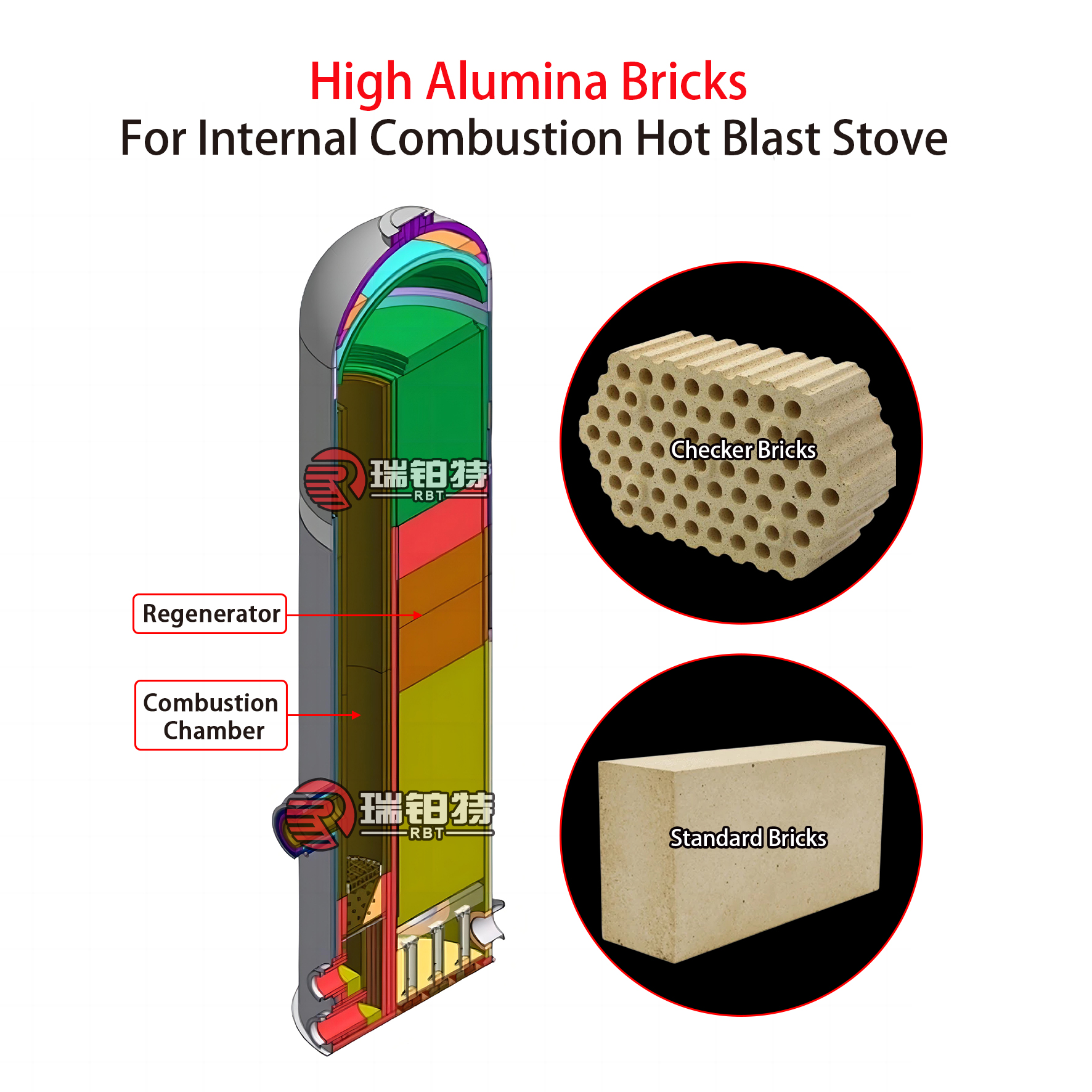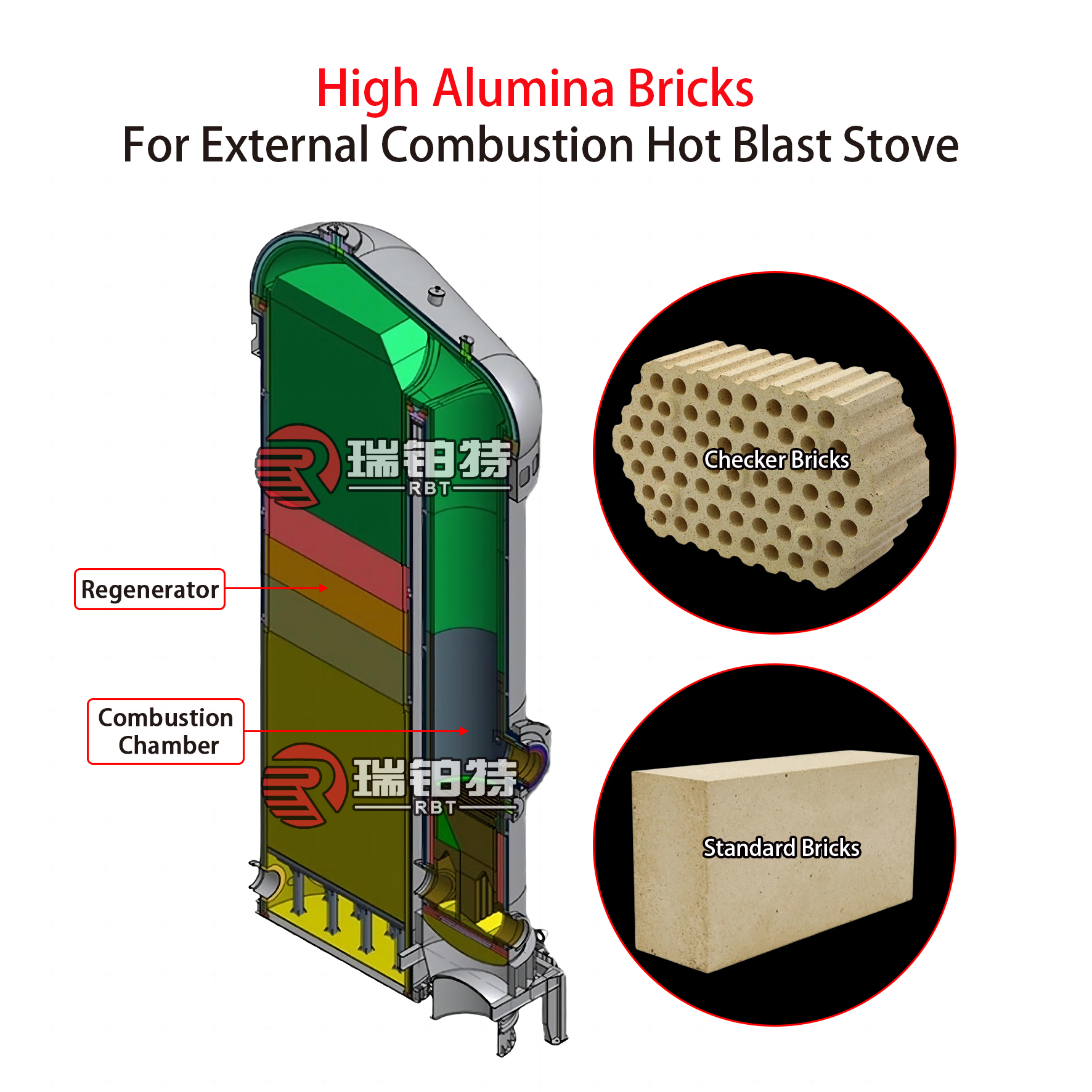Blast furnace ironmaking hot blast stove is an important core kiln in the ironmaking process. High alumina bricks, as the basic product of refractory materials, are widely used in hot blast stoves. Due to the large temperature difference between the upper and lower parts of the hot blast stove, the refractory materials used in each section vary greatly. The main areas where high alumina bricks are used include hot blast furnace vault areas, large walls, regenerators, combustion chambers, etc. details as follows:
1. Dome
The vault is the space connecting the combustion chamber and the regenerator, including the working layer of bricks, the filling layer and the insulation layer. Since the temperature in the hot blast furnace vault area is very high, exceeding 1400, the high alumina bricks used in the working layer are low creep high alumina bricks. Silica bricks, mullite bricks, sillimanite, andalusite bricks can also be used in this area. ;
2. Big wall
The large wall of the hot blast stove refers to the surrounding wall part of the hot blast stove body, including the working layer of bricks, the filling layer and the insulation layer. The working layer bricks use different refractory bricks according to the different temperatures above and below. High alumina bricks are mainly used in the middle and lower parts.
3. Regenerator
The regenerator is a space filled with checker bricks. Its main function is to use the internal checker bricks to exchange heat with high-temperature flue gas and combustion air. In this part, low creep high alumina bricks are used, mainly in the middle position.
4. Combustion chamber
The combustion chamber is the space where gas is burned. The setting of the combustion chamber space has a great relationship with the furnace type and structure of the hot blast furnace. High alumina bricks are mostly used in this area. Low creep high alumina bricks are used in high temperature areas, and ordinary high alumina bricks can be used in medium and low temperature areas.


Post time: Mar-27-2024












